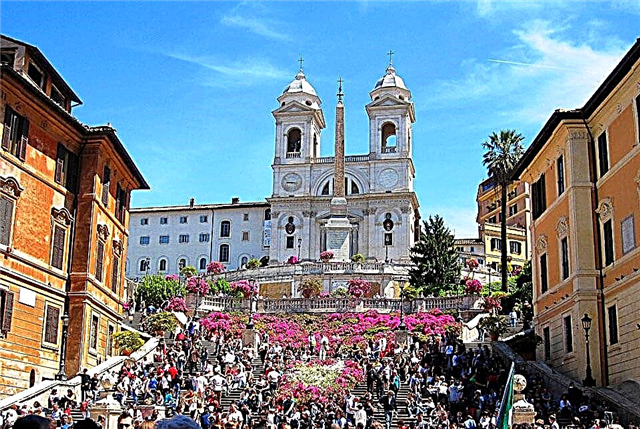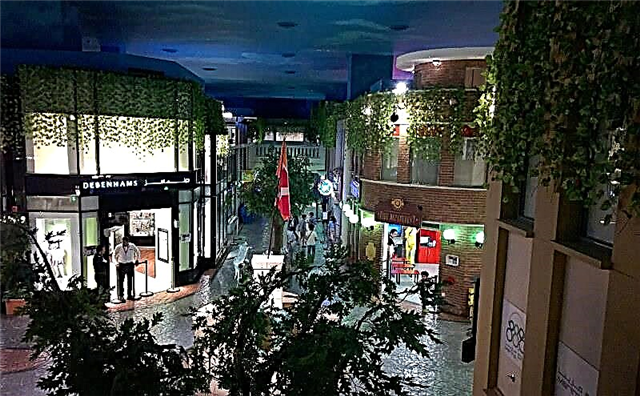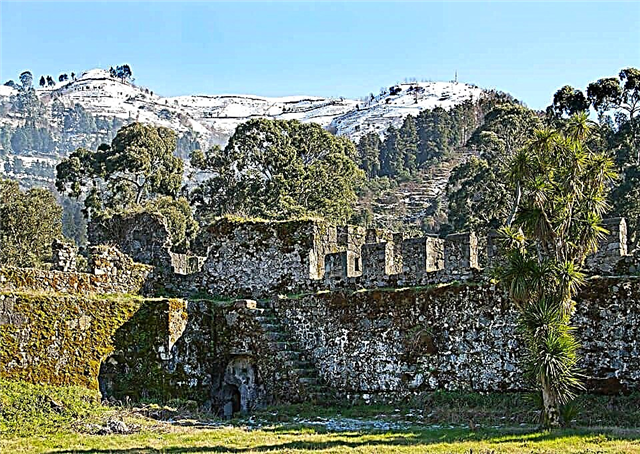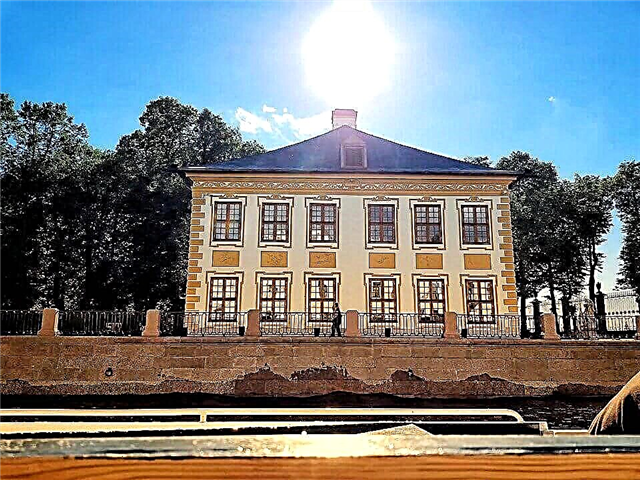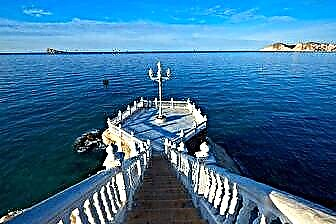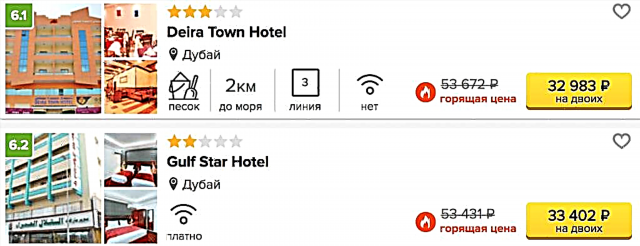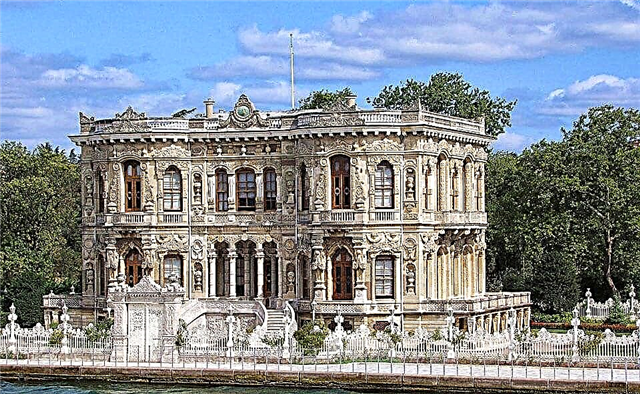Istanbul's museums are just what diversifies your beach holiday. Turkey is a country with a long history. And you can study it by walking through the halls, looking at the expositions. Significant events in the life of this country are intertwined with the history of Russia. And it is especially pleasant to meet Ivan Aivazovsky's canvases far from his native land.
Saint Sophie Cathedral

Hagia Sophia is not named after an Orthodox martyr. The name immortalizes the meaning of the word Sophia: wisdom. The Cathedral was ordered to be built by the Emperor Justinian. He believed that the main temple of the country should be located in the center of Constantinople. The work was carried out over 6 years: from 532 to 537. The labor of 10,000 residents of the city was used. And considerable funds were released: more than 130 tons of gold alone were brought. The bricks were used by the Rhodes: they had cavities inside to reduce mass. Columns of green marble were brought from the plundered Temple of Artemis of Ephesus. And from the Roman Temple of the Sun - columns for decoration.
The temple was Christian, and after the fall of Constantinople and the arrival of the Turks, it was rebuilt into a mosque. Minarets were added, interior paintings and mosaics were plastered. This saved valuable monuments from total destruction. The architecture of the building was repeated by the designers of the Blue Mosque. It was in the Hagia Sophia that the Pope excommunicated the Patriarch of Constantinople from the church. In response, the Patriarch excommunicated the Pope. This is how the split of the churches took place.
In 1935 of the last century, Ataturk ordered to remove the minarets, knock down the plaster from the inner walls and organize a museum in the building. But the restoration is still far from complete completion. US activists launched a movement to return the cathedral to believers. But the Turkish authorities rejected this offer.
The building is not empty. Tourists are attracted by:
- weeping column, from the gap of which water oozes
- a window from which a cool wind blows
- noisy niche
- flooded dungeons
- dry tunnel, the corridors of which are connected with neighboring architectural monuments
You should see the attraction either early in the morning or in the evening, shortly before closing: there are fewer people at this time.
Topkapi

The palace was built by order of Mehmed the Conqueror. And in this complex the sultans of the Ottoman Empire lived for 4 centuries. At first, the ruler settled near Bayazid Square. Before the invasion of the Turks, the Byzantine emperor lived here in his palace. But during the siege of the city, only the Church of St. Irene remained from the complex. Therefore, the Sultan's palace was built around the temple. The Sultan's palace looks like a fortress: on both sides it is protected by the Sea of Marmara. In addition, the complex is protected overland by 2 rows of walls: external and internal.
The whole complex is conventionally divided into several courtyards:
- 1st. Visitors to the complex enter the courtyard through the main gate. Here tourists visit the most ancient church in the city - the Temple of St. Irene, Meydan, where the Janissaries lived, a fountain and a mint.
- 2nd. It is separated from the previous courtyard by the Welcome Gate. This area includes: kitchens, hammam, sofa (council) building, treasury, servants' place.
- 3rd. It is separated from the second palace by the gates of Happiness. And this is not surprising: the main building in the courtyard is a harem. Additional buildings: a library, an audience hall (throne room), a school where officials studied, a treasury, barns and storerooms.
- 4th. This courtyard is a place where the Sultan could take a break from government affairs. Therefore, everything here is arranged with taste and comfort. Particularly attractive is the Marble Terrace, which hangs over the coast of the Sea of Marmara. Tulip garden is very beautiful. Of the outbuildings of interest is the tower, where the laboratory of the palace doctor was located.
The complex was built taking into account a possible siege: a tower was erected above the sofa, which was used as a lookout, and an underground passage led from the Tulip garden to the bay so that the sultan could urgently sail away from besieged Istanbul. A ship equipped to sail was constantly in the bay.
Archaeological Museum

Artifacts were regularly removed from the territory of Turkey. Progressive citizens were in favor of stopping the plunder. One of them was Osman Hamdi Bey. It was he who called on the authorities to establish an archaeological museum. Work began at the end of the 19th century and lasted 12 years. The original exhibition offered to see only the tombs. But later, the exposition was supplemented with antiquities from the East and a pavilion of tiles, previously exhibited in the Topkapi Palace.
The collection is constantly updated. At the end of the 20th century, a 6-storey building was rebuilt for it. There is also a complex where children can view antiquities. An interactive excursion allows children to learn more about the history of the empire. The advantage of the complex is its location in the city center. It is located in the historical part, near the Topkapi Palace.
Sirkeci Railway Museum

The exposition is located in the part of the Sirkeci railway station. Its area is insignificant (about 45 square meters), but the items exhibited here are very interesting. Tourists are invited to see:
- Parts of the interiors and decoration of the carriages of the Orient Express, which once arrived in Istanbul. Silver dishes are presented, part of the dining car has been restored.
- Parts of the halls decoration: ovens for heating passengers, armchairs from waiting rooms, station clocks are exhibited.
- Medical equipment that was available on every long-distance train in Turkey. First aid kits and aid tools are on display here.
- Plates that informed passengers about services at stations and on trains.
- Communication facilities used by transportation services: telegraph, teletype, telephone, signal flags.
- Cash register equipment: adding machines, typewriters.
- The current layout of the train.
Adult visitors are attracted by the exhibited cabin of a 1955 locomotive. It is noteworthy that it is possible to inspect the entire exposition in half an hour or an hour.
Basilica Cistern

This is an underground reservoir that provided water to the entire population of Constantinople. Construction began under Constantine and ended under Justinian. When the Turks conquered the city, they used the Basilica Cistern to water the Tulip garden of Topkapi Palace. Soon the new owners of Istanbul abandoned the Basilica. But ordinary townspeople knew about the existence of the reservoir: they punched holes in houses and used the liquid for personal needs. Some lowered boats and caught fish, which were abundant.
The reservoir was found in 1545 by a French digger. But the city authorities did not react in any way to the interesting find. Soon the Basilica began to resemble a waste dump. The Turkish government decided to carry out the restoration of the Basilica at the end of the twentieth century. To do this, they pumped out water, removed the debris, and strengthened the vault. For the convenience of visitors, wooden platforms were built. The room is illuminated by lamps. But the floor is covered with a layer of water 1 meter thick. Inside the Basilica is a cavity with walls more than 4 m thick. They are impregnated with a composition that repels water. Columns hold the ceiling. Researchers claim that they were taken from destroyed temples.
Tourists are attracted by the inverted jellyfish heads. These are pedestals from the columns, which for some reason are installed in a different place. A legend has been invented that explains this position of the heads. Inverted, they will not turn visitors to stone. Second attraction: the weeping column. Its surface is decorated with carved drops, and the surface is always wet. Legend claims that these are the tears of slaves who died during the construction. In the far corner of the Basilica, there are carps who are considered the silent guardians of the cistern.
Filoxena cistern

This is another reservoir built underground.It could supply fresh water to the entire city for a month. It has 3 tiers. But not all of them are available to visitors. Emperor Constantine began to store fresh water for future use. To strengthen the ceiling, columns of Marmara marble were erected. They were hewn out in the form of cylinders, consisting of 2 parts, and then fastened with rings of marble. The bases of the columns are decorated with carvings. It is noteworthy that the columns are marked by the workers who made them.
Getting inside the Basilica was not easy: the entrance was closed by statues of animals cast in bronze. The water supply was regulated by the machine shop, and in order to prevent the liquid from extinguishing, the air was let through the holes cut into the ceiling and tightened with gratings. During the Byzantine Empire, the cistern accumulated and stored water for supplying it to residential areas. And under the Turks, silk was dyed in it. Today tourists can get acquainted with the structure, unique in its beauty and functionality.
Maritime museum

The complex is located on the shores of the Bosphorus. The building has 3 floors, where everything related to navigation in Turkey is exhibited:
- ropes tied in various knots
- marine instruments
- models of ships of different eras
- naval and personal weapons
- paintings depicting sea battles
Visitors are interested in the hall where the exposition dedicated to Ataturk is presented. Personal yachts, a cruiser, household items belonging to the national hero are exhibited here. The artifacts displayed indoors are interesting for both adults and children. Nearby there is a cozy park where Turkish Admiral Barbarossa Hayreddin is buried. After viewing the exposition, it is pleasant to sit in the shade here.
Park Museum of Miniatures

This is a very young museum: it was opened in 2003. The Turkish authorities decided to immortalize the most significant monuments for the country and the whole world in miniature. The exposition is located on an area of about 60,000 square meters.
It can be conditionally divided into several parts:
- Attractions in the city. This is the airport, Sultanahmet Square with the Blue Mosque and Hagia Sophia, Cistern Basilica and Topkapi Palace.
- Attractions located in Turkey. Tourists are invited to explore the Temple of Artemis, the Mausoleum of Halicarnassus, the Malabadi Bridge, Cappadocia.
- Landmarks built during the Ottoman Empire, but currently located outside the country. These are the Damascus Gate located in Israel, the Cairo mosques, the city of Thessaloniki.
The complex has a restaurant, playground, gift shop, parking. Tourists can have a snack without leaving the exposition.
Rahmi M. Koç Industrial Museum

The exposition was founded with his own funds by the Turkish billionaire Rahmi Koch. He, an engineer by profession, decided to exhibit all those creations of human thought that amaze mankind. To begin with, Koch bought out idle foundries located in the Golden Horn Bay. The premises were in need of large-scale restoration. Already in 1991, the first tourists visited the exhibition. A few years later, Koch bought out the abandoned shipyards located near the already acquired building.
Again, a large-scale restoration was required, but it paid off: there was a place for new exhibits. Rahmi Koch did not stop there: he bought an open area, where he placed ferries, steam locomotives, cars. It now boasts that it has collected all the outlandish exhibits that can move, fly, or just rotate.
Dolmabahce

In the 17th century, the waters of the Bosphorus splashed on the site of the building. But the sultan came up with the idea to fill up a small bay and build a palace of wood. Over time, the building collapsed. But in the 19th century, Sultan Abdul-Majid, fed up with palace luxury, decided to build a luxurious castle on the site of the embankment, which was different from the simple but functional Topkapi Palace. The structure is therefore called the "bulk garden". The palace was distinguished by unprecedented luxury: hundreds of kilograms of gold and silver were used to decorate it.
The interiors of Dolmabahce still impress visitors today. Tourists are invited to inspect the throne room, where Abdul-Mehmed held ceremonial receptions, the premises of the harem, the palace kitchen and the private chambers of the Sultan. Visitors are attracted by the treasury, where the jewelry and personal belongings of the inhabitants of Dolmabahce are exhibited. Abdul-Mehmed was a fan of Ivan Aivazovsky. The halls of the palace are decorated with paintings by the artist specially commissioned by the Sultan. Basically, they depict the Bosphorus.
Rumelihisar

The fortress played an important role during the siege of Constantinople by the Turks. It was built opposite the existing fortress of Anadolu Hisar, making the Bosphorus closed for the passage of warships from the Black Sea. The fortress was erected in a uniquely short time: 4 months and 16 days. At the same time, the construction was personally supervised by Sultan Mehmed the Conqueror. The garrison consisted of 400 janissaries armed with cannons.
Currently, tourists are invited to inspect the courtyard, where the cannons are displayed, which were in service with the garrison during the capture of Constantinople. You can climb to the observation deck or just wander the walls, enjoying the views of the Bosphorus.
Radisson Blu Bosphorus Hotel
It offers luxurious rooms and suites

Ciragan Palace Kempinski Istanbul
Infinity pool overlooking the Bosphorus, spa

Sumahan - on the Water
Right on the shores of the Bosphorus

War museum

Initially, the exposition was housed in the Church of St. Irene. Moreover, the exhibition was periodically closed, and weapons were simply kept in the temple. But in 1950, a place was found for the exposition in the gymnasium of the military academy of the Ottoman Empire. And again, not everything went smoothly: the exhibition was moved, the premises were reconstructed and rebuilt. Since 1993, tourists have been offered a permanent exhibition of 22,000 items. The main value is a unique collection of weapons. Instances of the 16-20th centuries are presented. All significant battles in the history of the Ottoman Empire are shown in the halls.
Tourists will get acquainted with:
- items of military life of commanders and privates
- armor of war horses and camels
- flags and banners of the Ottomans
From 15:00 to 16:00, the military band Mechter plays in the halls. There was a tradition: during the movement of troops and before the start of actions, an orchestra passed through the streets, performing military marches in minor key. The townsfolk knew: a new era was beginning.
Beylerbey Museum

This building is located in the Asian part of the city. The complex consists of the house itself and the garden located around it. Once in the palace, the Sultan lived with his family in the summer. Recently, the inspection was carried out only with a guided tour. Now tourists can get acquainted with the interior and architecture on their own. The audio guide helps them in this. Initially, at this place, Mehmed 2 ordered the construction of a summer residence made of wood. The palace stood for several years and burned down. But instead of the building that died in the fire, another was rebuilt, made of marble. The building is 3 floors high and has a basement.
The style is modern baroque. The interiors of the rooms are rich: bohemian crystal chandeliers, Egyptian reed mats on the floor (they protected the feet of the owners from border temperatures), Chinese vases. The furniture is finished with wood carvings. It is forbidden to shoot on camera: museum staff strictly monitor this. There are many trees and flowers in the yard, the territory is decorated with images of animals. For tired tourists, there are benches in the garden. Everything is very clean. The site offers a marvelous view of the Bosphorus.
Museum of Turkish and Islamic Art

The modern exposition is located in a mansion donated by Suleiman to the Magnificent Ibrahim Pasha. This building is an architectural monument, its value is commensurate with the Topkapi Palace. Only by visiting the complex, one can understand the tastes and preferences of the Turkish people. The exhibition is huge: it consists of 40,000 items belonging to the nobility. The earliest artifacts date back to the 16th century.Until 1914, the exhibition was very modest: it occupied the dining room of the Suleymaniye Mosque. The complex flourished in 1938: at this time the Republic of Turkey was proclaimed. In 1985 the museum was included in the UNESCO catalog.
Visitors are invited to see:
- carpets (some 5 hundred years old)
- manuscripts (authentic copies of the Koran are especially valuable)
- shamail (artistic calligraphy depicting suras from the Koran)
- wood products
- ceramics
- glass artifacts
- Forged Products
- household items (combs, jugs, basins)
The exposition ends in the ethnography hall. Here you can see yurts, costumes from the times of the Ottomans, parts of the interior.
Yedikule Museum

Any tourist wants to visit the Golden Gate. But they are part of the fortress wall that once defended Constantinople along its entire perimeter. The emperors of the empire entered the city through this triumphal arch. After the fall of Constantinople, Mehmed the Conqueror did not destroy the Golden Gate: on the contrary, he ordered to build 7 towers around, and additionally strengthen the walls. This is how a seven-tower (edikule in Turkish means 7 towers) fortress appeared.
In the courtyard, visitors will see the guns that fired at the city in 1453, and the cannonballs to them. A marvelous panorama of the city and the Bosphorus opens up from the walls. You can walk and admire the surroundings from half past ten in the morning to half past five in the evening on all days of the week, except Wednesday.
Panorama 1453

The center has been operating since 2009. It was organized at that time by Prime Minister Erdogan and Mayor Topbash. A building 20 m high and 38 m in diameter in the main hall was built specially for the exposition. The exhibition is dedicated to the 54 days of the siege, after which the Byzantine Empire fell and another - the Ottoman Empire - arose. The painting depicts 100,000 soldiers fighting on both sides. The canvas is backlit, which enhances the overall impression of the panorama.
All types of weapons that were used during the battle are presented. Moving along the observation deck, you can get acquainted with all the stages of a long and bloody siege. The complex is equipped with an elevator and a lift for few mobile citizens wishing to visit the panorama.
Aviation Museum

The advantage is the proximity to the international airport. You can get there in just 20 minutes by commuter train. And you can inspect the exposition located in the open air for 3-4 hours. Aviation enthusiasts will get a lot of positive emotions. All versions of what was in service with Turkey in different years are displayed on the open-air site.
Visitors will see aircraft built by Turkish design bureaus, purchased in Italy and South Africa. For tired tourists, there is a cozy cafe on the territory where you can have a snack and rest. Visiting the exposition is a great activity for transit passengers who have a few hours of free time.
Museum of Palace Collections

The layman dreams of learning the secrets of the life of the nobles. The exposition of the Palace Collections complex helps to satisfy this passion. The exhibition is located in the building where the Sultan's kitchens were once located - in the Dolmabahce Palace. The value of the exposition lies in the fact that the artifacts belonged to the sultans of different dynasties. Dishes, parts of interiors, clothes, books, watches, furniture are on display. The complex is open all days of the week from 9 am to 5 pm, except Monday and Thursday.
Museum of Painting and Sculpture

The exposition received its first visitors in 1937. Ataturk was the initiator of this exhibition. For a Muslim country, the opening of such a complex was revolutionary. The basis of the exhibition is the works of Turkish artists and sculptors who created art objects in the 19th and 20th centuries. The administration of the complex is proud of the sculptures of Eyyuboglu and the canvases of Abidin Dino. But the paintings of the Russian seascape painter Ivan Aivazovsky are also presented in the halls. Unfortunately, some of the premises are under reconstruction, and it will not be possible to visit them. The exhibition can be viewed from Tuesday to Saturday. The complex is closed on Sunday and Monday.
Cariye Museum

The building of the modern museum was built by the Byzantines in the 5th century. It was named the Chora Church, which means "outside the city." At that time it was an Orthodox church, where regular services were held. After the fall of Constantinople, the Chora Church was turned into a mosque, then again given to Orthodox believers. Since 1958, it has been an exhibition complex; services have not been held here.
From the outside, the building looks modest, but inside there are unique collections. Visitors will see perfectly preserved Byzantine frescoes and mosaics. Chora Church has the only mosaics that illustrate biblical stories. Presented are stories from the childhood of the Savior, miracles performed by God. Chora Church doors are open to visitors on all days of the week, except Wednesday, from 9 am to 5:30 pm.
Retro car museum

This exposition will appeal to everyone who loves cars and the history of the automotive industry. The complex is located in the Asian part of the city, next to the Eminenu Marina. This is a new private complex: it was created in 1988 by the collector and motorist Chingiz Artam. All his life he collected old cars, looking for rusty rubbish in the provinces, buying it from the owners and restoring it. And when the collection grew, Chingiz Artam decided that it was time to show it to everyone. This is how a unique complex appeared.
The owner of the vernissage does not only exhibit wonderful specimens for viewing. He popularizes motoring. In 2004, several of Artam's cars participated in retro races. One of them was ruled by Schumacher. Turkish television showed a documentary about the competition. Key message: Turkey is ready to win the hearts of tourists with its outlandish industrial expositions.
Calligraphy Museum

Muslim art is quite unusual: the faithful are forbidden to depict the faces and figures of people. But it is allowed to rewrite suras from the Koran in different fonts, to richly decorate inscriptions with floral ornaments. This was the beginning of calligraphy. This art was owned by many noble persons of the empire. Sultan Bayazid 2 himself was engaged in calligraphy with enthusiasm. And Mehmed 2 the Conqueror enthusiastically portrayed suras. Samples of his manuscripts are on display.
Visitors will see:
- Quran filled with different scripts
- handwritten texts in Hindu
- Moroccan letters
- unique seals, plates
- earth taken from the grave of the Prophet
- exhibits of historical and religious value
The exhibition can be visited from 9 am to 12 noon and from 1 pm to 4 pm.
Carpet Museum

In 1979, the exhibition was located in one of the pavilions of the Sultanahmet Mosque. But the collection has grown: the number of presented artifacts has approached 2500 units. Therefore, in 2013, the exposition was transferred to a specially renovated building near the Hagia Sophia. Modern premises allow you to maintain the required temperature and humidity to preserve unique specimens.
For the convenience of visitors, the collection is divided into the main periods of the development of carpet weaving:
- Early Ottoman and Late Seljuk periods.
- The middle period of the development of the Ottoman Empire. At this time, prayer rugs became popular. Rich exposition of Anatolian carpets.
- Late period of the Ottoman Empire. Huge carpets are on display. Tourists will see how the prayer rugs have changed.
The exhibition accepts visitors from 9 am to 4 pm on all days except Sunday and Monday.
Pera Museum

This is a fairly new exhibition, but it has already become popular with tourists. To accommodate all the artifacts, it was required to reconstruct the buildings of the 19th century. Exhibitions here are divided into permanent (they are located on the first 2 floors) and thematic (the rest of the premises are reserved for them).The exposition is constantly working: a collection of weights and measures that existed in Anatolia, coffee porcelain, paintings of the 19th century, painted by Turkish artists.
The complex has a cinema room where films on topics related to the exhibitions are shown. The administration holds events for visitors. Tired tourists can dine at the inexpensive café on site. There is a small souvenir shop on the ground floor. The complex accepts visitors from 10 am to 6 pm on all days except Monday.
Modern Art Museum

The warehouse building in the port was reconstructed to accommodate the exhibition. Now it is a fashionable place that is visited not only by tourists, but also by residents.
The complex has:
- A modern cinema hall, where interesting films are shown
- Library containing a collection of books and magazines on contemporary art
- Halls for thematic and permanent exhibitions
- Premises for events dedicated to contemporary art
- Photo gallery showing pictures of Turkish photographers
- Exhibition of modern sculpture, which is located in a small cozy courtyard
All exhibits have explanatory plates in Turkish and English. In addition, visitors can take advantage of the audio guide. It is possible to visit the complex from 10 am to 6 pm on all days except Monday.
Church of St. Irene

This church was built by Emperor Constantine. He forced his subjects to be baptized, but at the same time immortalized this event as peaceful (Irina means "peace"). The temple was damaged several times. The reasons were different: religious wars, natural disasters, the coming of the Ottomans. But he didn't die. Today it is a cultural institution. It is called the Temple of Art. Concerts are held here, all performers and listeners celebrate the unique acoustics of the room. Visitors can see the remains of frescoes and mosaics on the walls. They are well preserved. Inside is the tomb of Emperor Constantine. You can visit the Church of St. Irene from 9 am to 5 pm on all days except Tuesday.
Museum of Innocence

This exposition will be interesting for people who are truly in love. It was created by the author of the novel "Museum of Innocence" Orhan Pamuk. The novel was published in 2008. The exhibition was created exactly as described by the author. He bought a house from the municipality, where, in his opinion, the heroine Fusun was supposed to live. Then Pamuk filled the room with things that the heroine of the novel seemed to use. He bought them in advance on flea shocks.
And it turned out to be a matter of technique to create a touching exposition. None of the visitors are left indifferent by cigarette butts with descriptions of events or worn-out shoes. In addition, there is a desire to read the entire novel. The romantic exhibition can be viewed from 10 am to 6 pm on all days except Monday.
Museum of Living History and Dioramas

This exposition was prepared by a creative person, artist and industrialist. He collected exhibits and designed dioramas on his own for 18 years. The aim of the exhibition is not only to study the past of the world, but also to try to model the future. Not a single event that took place on the planet remained outside the framework of the exhibition.
All elements of dioramas are followed exactly. But the owner of the center does not stop there. He wants to expand the exposition, add premises for a library with a reading room and a cozy garden where visitors can rest. The administration plans to move the complex closer to the historical center in order to make it easier for tourists to get there.
Kyuchuksu

Sultans are capricious people. And Abdul Majid was no exception: he needed a summer residence. No sooner said than done. A wooden palace was built between two rivers, Küçüksu and Geku. But this is too vulnerable material, so Abdul Majid soon rebuilt the building. From now on, he had stone apartments. The building style is defined as New Baroque. At the same time, the European sophistication was complemented by Asian splendor.
The complex has been operating as an exhibition since 1944. But the palace was dilapidated, and in 1992 a large-scale restoration was carried out. Inside, the original interiors of the time of Abdul Mezhid are presented, and in the courtyard there is a cozy garden with ponds. Today the palace can be visited with a guided tour. The complex is open to tourists from 9 am to 5 pm on all days of the week except Mondays.
Porcelain Factory Museum

At the end of the 19th century, the Turkish authorities took measures to improve the efficiency of local porcelain production. For this, process engineers from France were invited. New products have conquered not only the nobility of Istanbul, but also the inhabitants of Europe. The products were decorated with images of the Sultan, animals, landscapes. Vases, plates, jugs, cups were not only beautiful, but also of high quality. These products were bought not only in Turkey, but also abroad.
In the 30s of the twentieth century, the plant still stopped producing products and was closed. But in 1957, porcelain production began again. In 1995, a museum was organized at the factory. Now tourists can not only take a guided tour of the workshops, study the intricacies of porcelain production, but also buy their favorite exhibits in the souvenir shop.

